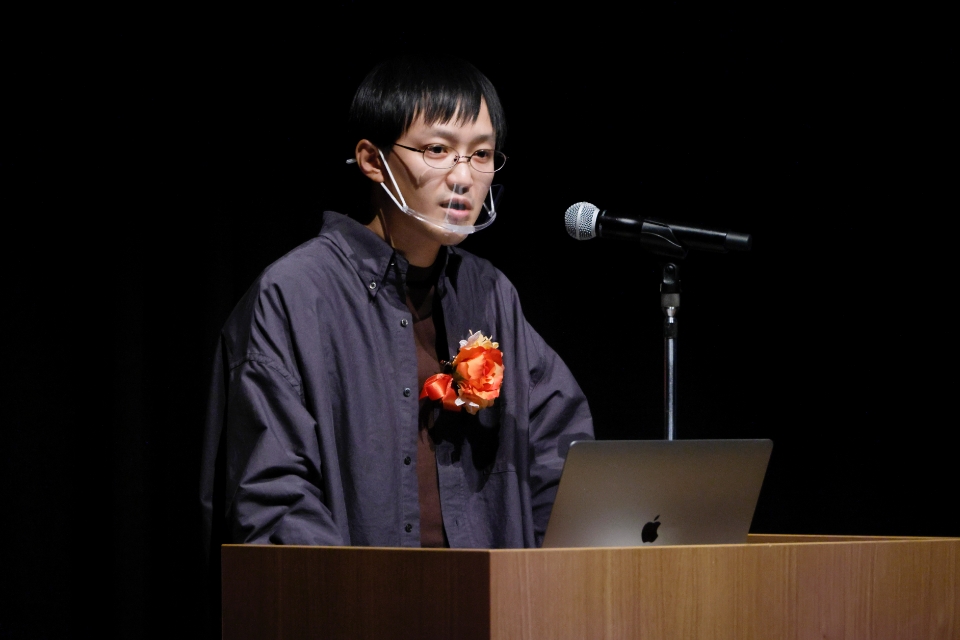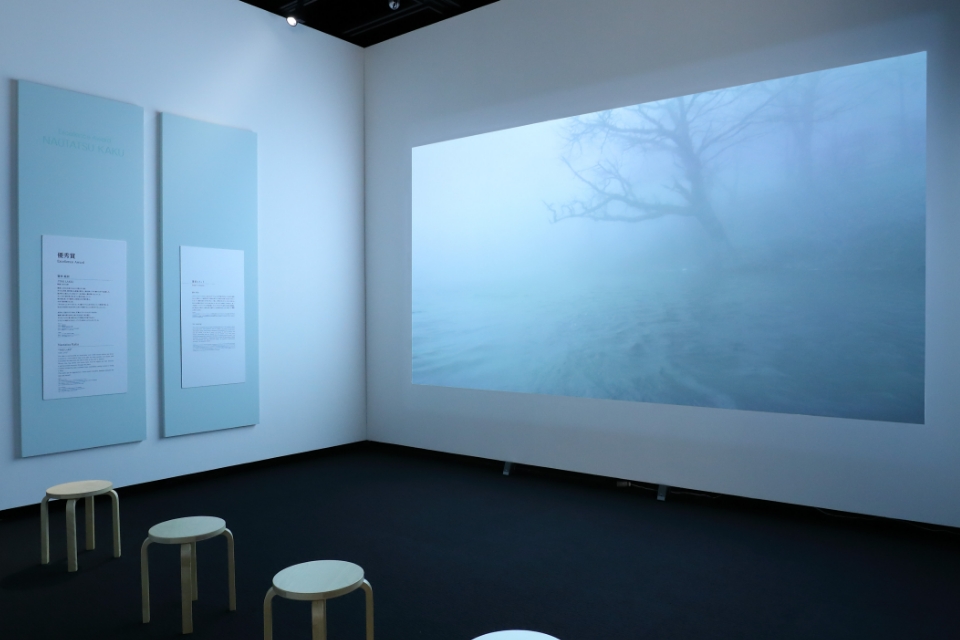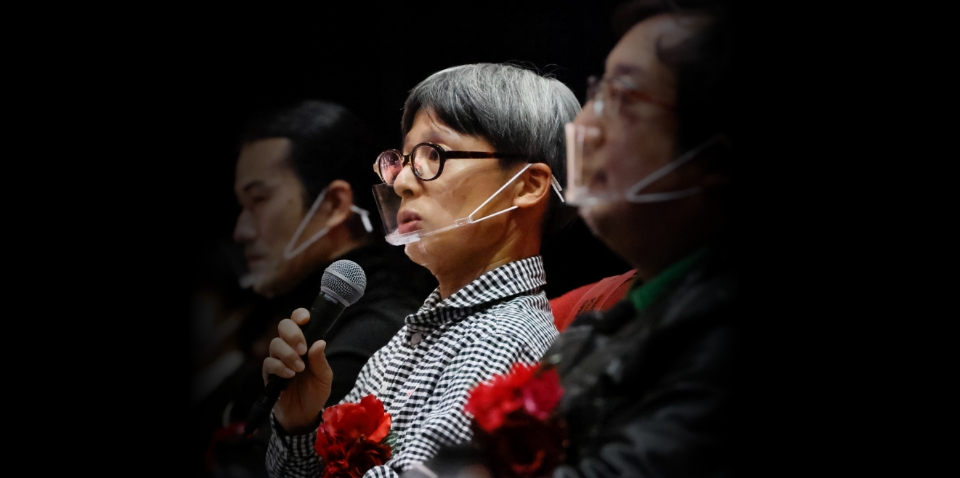PRESENTATION
Creating works for me is a way to confirm my place in the world. Why do I need to confirm my place in the world? Because I was born and raised in Japan to Taiwanese parents. Since I have only learned Japanese, I can't understand my parents' conversations or the words my relatives in Taiwan speak. I have no memories of having a proper talk with my father, who barely speaks any Japanese. I grew up always wondering who I am and where I belong.
I picked up a camera to face up to both my family and the feelings I held. I created my first work using photos and videos to trace the history of myself and my family. I wept while I created that work. Even now, I can't put the feelings I had then into words. But as I pointed my camera at my father and mother, I knew for certain that taking photos had become a language for me.
When I exhibited that work, a person who happened to come along saw the work and cried. It was as if the work connected me with that person and had given me a place to belong. I keenly remember how awestruck I was that photos and videos have such power.
This video, THE LAKE, has a similar concept. The COVID-19 pandemic has created many divisions and broken off all kinds of relationships. I, too, felt I was losing sight of my place in the world because of a lack of interactions with people and constraints on my work. In a bid to claim back what I was losing to COVID-19, I entered a completely unknown land as a stranger.
The first shot of the work, taken while riding a bus, depicts my approach to and first encounter with the lake. From then on, I stayed in a room with a view of the lake for three months over winter, and I documented the lake from the time it froze over to the time it thawed. I stayed there during the state of emergency from January to March this year. Life around the lake follows the changes of nature, not set periods delimited by COVID-19. When the lake begins to freeze, boats are pulled in from the water, and when the lake thaws, they are put out again. When it rains, fog fills the air, and when snow falls, it is removed. When spring comes, shops and restaurants open again. I carried on gazing at the changes in nature as I surrendered myself to this place where time flows so peculiarly.
Just as joining photos one by one creates meaning, I cemented the relationship between myself, the outsider, and the place through the act of filming. There is a shot near the beginning looking out at the lake enshrouded in fog, and at the end of the work, I plunge into the fog in a boat. I came to know the place through the camera, much like I had when I pointed my camera at my parents. Although I stayed for only three months, I'm certain this is a place I can return to. Despite being an outsider, people waved to me when I set out on my journeys and people said “welcome back” on my return. Today, some of the friends I met through my photographs and videos have come out to support me. Building such relationships is what, for me, photographs and videos can do. My intention, as I continue to take images, is to turn what I record into something to believe in for these people and others.


I think the video enters nature and with great care encapsulates emotional interactions with nature. What concerned me a bit was the length of the work, at 25 minutes. It could have been three hours long and still have been okay. I think it should have been long enough that viewers get so bored that even a gust of wind would make them jump.
(Kaku)
My main consideration was getting people to watch the lake all the way from when it freezes to when it thaws. I thought 25 minutes was an appropriate length for that purpose. It needed to be that long in order to show the power in each individual shot.

Judges' comments and Q&A
Noi Sawaragi (selector)
The COVID-19 pandemic has brought with it an odd perception of time. Our sense of seasonality has waned, and people's behaviors and actions are governed not by the sensations of the four seasons, but by variations in the number of infected people. So your work resonated with me in how the video expressed the movement of time that humans cannot intervene in —from the time the lake ice freezes until it melts — a perception of time that is different from the usual flow of time. Your work made me think that it's conceivable this is how time flows in the present day.
I have a couple of questions. First of all, why did you title your work THE LAKE when it only features scenery from Lake Haruna, a place like no other, and why did you conclude the work as a symbolical representation of a universal lake? My takeaway was the scope of your conclusion was too large, as a viewer could imagine that such movements in time occur at all lakes.
Next, although it seems you recorded the passage of time that exists without human intervention without any effects, in some parts you manipulated time by speeding up the video. In my opinion, it would have been better to edit the footage so that it flowed at the same pace as the actual filmed time. What you have done unfortunately looks like nature shaped by human hands. Even if the length makes it a bit tedious, I thought you should have let time in the video pass in real time without intervening or adding effects.
My last question is although all the scenery in the video is devoid of people, there is one point where you capture an old woman for a moment who then walks out of the frame. Why did you decide to keep just that one person in the video?
(Kaku)
I chose the title THE LAKE because I wanted to present a place where such changes occur, not to feature Lake Haruna itself. I wanted people to imagine the lake as a place that could be anywhere, rather than have them see it as Lake Haruna.
I wasn't completely satisfied with the sped-up portions and other editing I did either. When I was editing, I decided to pay attention to the pacing before and after each shot and adjust the speed to create a rhythm with the shots.
As for the scene with the old woman in it, it didn't feel like I deliberately captured a person on film to me. The old woman simply walked past the camera after I had set it up. I kept the scene in the video as is, because I captured her against the backdrop of Lake Haruna.